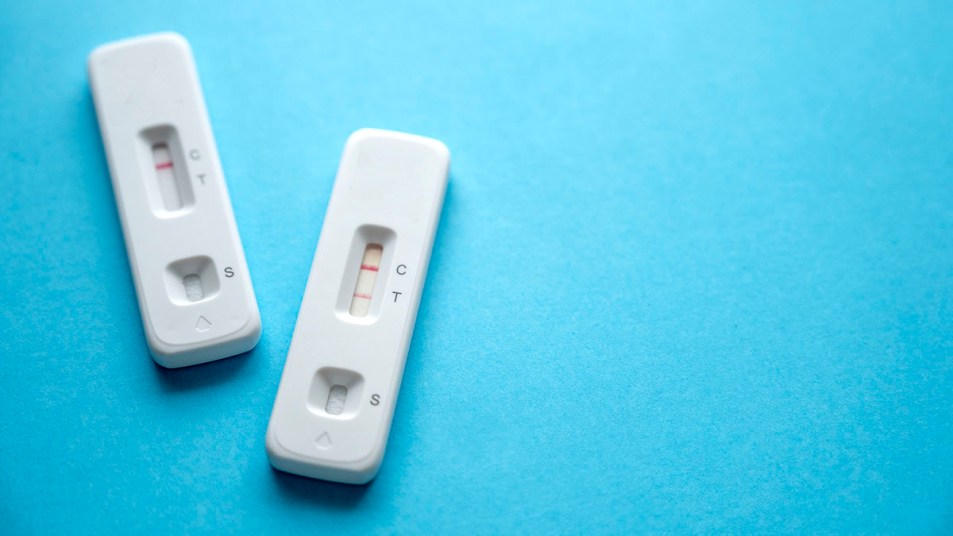At-Home COVID-19 Tests Will Soon Be Free, Thanks to a New Law

As the COVID-19 pandemic continues to put a damper on our day-to-day activities and gatherings, having a supply of at-home rapid tests on hand has quickly become essential. For many of us, taking these tests on a regular basis offers some peace of mind, with the highly-contagious Omicron variant infecting hundreds of thousands of people each day. But they’re also quite pricey, and when you’re taking multiple tests a week, the cost really adds up. If you have private insurance, however, here’s some welcome news: A new law requiring insurers to cover the rapid tests means that, essentially, you’ll be able to get free at-home COVID-19 tests very soon.
Starting January 15, people with private insurance will be reimbursed for up to eight at-home COVID-19 tests every month. That’s great news for the 45 percent of Americans who are privately insured, as at-home tests can range from $14 to $32 for a pack of two. That’s hundreds of dollars a month each family could be saving. (Don’t have private insurance? Don’t worry. There are options for you, too — keep reading for details.)
How to Get Free At-Home COVID-19 Tests
To qualify for this new policy, first find out which pharmacies, stores, or online retailers are approved by your insurance. Some insurers don’t specify particular retailers, in which case you’ll be able to buy tests at any location and still be reimbursed. But for companies that do limit locations, it’s important to seek those out if you want to get free at-home COVID-19 tests.
If your insurance company specified certain retailers and you use an “out of network” location to buy your tests, your insurance will only be responsible for up to $12 per test (or $24 per two-pack). Simply log into your insurer’s website to find if they set up preferred sites, or call their customer service hotline.
If you use an approved seller:
Once you’ve located an approved site, you can buy up to eight at-home COVID-19 tests per person in your family, if they’re all included in the same coverage plan. The location should give you the test for free after you present your insurance, so you don’t have to pay out of pocket and submit a claim for reimbursement.
If you’re charged for a test after January 15, even at these approved locations, keep your receipt and read on for more info on how to get your money back.
If you use an “out-of-network” site:
Once you purchase your test, make sure to keep your receipt! This will be important when making the claim to get your money back.
With your receipt in hand, contact your insurance for a claim form. Some insurers have these on their websites, making the process a whole lot simpler. Fill out your claim form with the necessary details and submit the form. (It doesn’t hurt to contact your insurer anyway, so they’re aware you’ve filed the claim and can confirm you’ve done it correctly.)
While this is an inconvenience, its certainly worth it for families having to take multiple tests a month. And the Biden Administration has outlined plans to make the system automatic when you purchase, so hopefully filing a claim to get your money back won’t be necessary in the coming weeks.
What if you’re not insured?
If you’re not privately insured, free testing is still available at many community centers. The federal government continues to require testing sites to offer free COVID-19 tests, regardless of insurance status. And starting soon, the Biden Administration will be sending out 500 million free at-home rapid COVID-19 tests to people’s homes. Details of the plan are expected soon.
In the meantime, it’s important to use the right masks to keep you and your family safe — and remember, you can sanitize them for multiple uses. And of course, if you’re not yet fully vaccinated against COVID-19, that’s the best way to protect yourself from serious illness during this ongoing pandemic. Stay safe out there!












